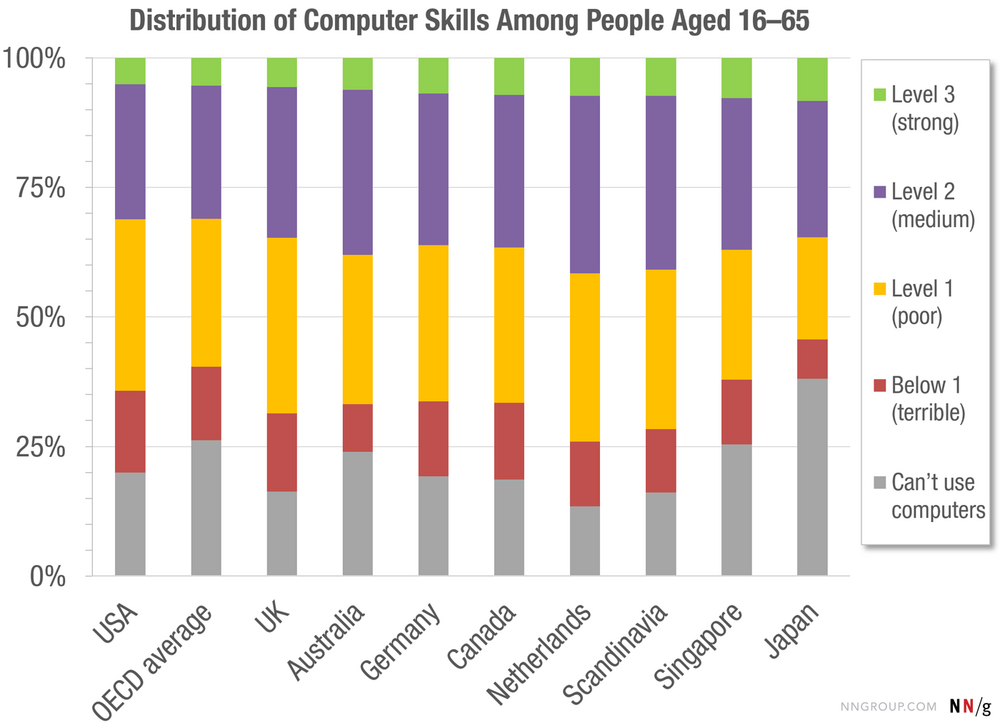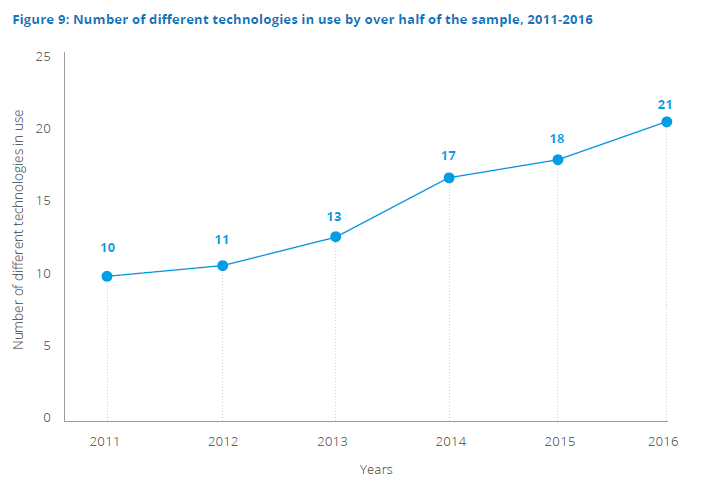Habits of top performing learning teams

The latest Towards Maturity report, Unlocking Potential, features many insights into how organisations can bring out the best in their learners.
One headline from the report is the widening performance gap between high and low performing L&D teams.
What’s holding some organisations back? One of the key messages is about the barriers:
- Staff lack skills to manage own learning (reported by 62%)
- L&D lack the skills to implement and manage elearning (59%)
- Line managers are reluctant to encourage new ways of learning (58%)
So how are the top 10%, referred to as the ’Top Deck’ in the report, able to realise the benefits of digital training so much more effectively than others?
Is it that their learners are simply better equipped to deal with technology? Probably not.
A recent study by the Organisation for Economic Co-operation and Development (OECD), a club of industrialised countries, gives us a baseline for technical capabilities of the general public.
The research assigns people to one of five groups, ranging from people who can’t use a computer at all to people with strong computer skills. Here are the example tasks that each group can complete:
- Can’t use computers
- Below 1: “Delete this email message”
- Level 1: “Find all emails from John Smith.”
- Level 2: “Find a sustainability-related document that was sent to you by John Smith in October last year.”
- Level 3: “Find the percentage of the emails sent by John Smith last month that were about sustainability.”
Here’s the breakdown for each level for some major countries:

If your workforce is anywhere near the average distribution of the population then even basic digital training might pose an issue for many learners.
If you design or oversee digital training it’s likely that you’re in the top 5% of computer users in the country. You might not be writing JavaScript or deploying servers, but compared to the average person, you are an elite computer user.
This is true for everyone, including the Top Deck companies and those struggling to make an impact.
"I have found that we need to ensure that our learners are ready to learn. Do they have the knowledge and skills to effectively use the tools you want? Technical literacy should not be assumed." - Chief Instructor, Defence Sector - Unlocking PotentialWho are the top deck?
Top Deck organisations are from a wide range of backgrounds across the private, public and not-for-profit sectors
18% have under 500 people, 33% over 20,000 people.
Just 41% of those in the Top Deck have been working with learning technologies for over 10 years and 24% have less than three years’ experience
How are top performing L&D teams doing it?
- Spend more of the L&D budget on learning technologies
There’s a large range of technologies being used, with many organisations experimenting with different technologies. Trying out different approaches gives you the opportunity to find the best solution for your learners.

“Top Deck companies do not have the biggest budgets or L&D staff relative to the organisation size, but they do allocate more of their budget to learning technologies (28%)” – Towards Maturity
As learning technology encompasses more and more of the process of training it expands to include areas which aren’t traditionally technology focused.
Spending more doesn’t necessarily mean going for the latest cutting edge hardware or software. It might mean investing more time on the strategy behind the learning, or on the measurement and tracking after the programme is deployed.
That extra proportion of budget might be dedicated to creating more easily accessible training that works for more of the learners than before. Modern technologies make it easier and more intuitive for non-technical people to interact with digital training.
The aim of many of the latest advances in technology like virtual and augmented really and voice control is to make it more intuitive to interact with computers.
“Simplicity is a great virtue but it requires hard work to achieve it and education to appreciate it. And to make matters worse: complexity sells better.” - Edsger W. DijkstraMaking things easier for your learners is one of the best returns on investment and it often starts with trying a new approach.
- Talk to each other about the training they use
We see several statistics in the report that suggest top L&D teams are communicating more with their colleagues and learners about the training they offer.
- 49% agree that staff are likely to recommend technology to colleagues to improve performance (vs 17% of lower achievers )
- 66% pull key stakeholders together into a steering group to support programme design and implementation (vs 37% of lower-achievers)
- 63% ensure there is a communication plan in place for all key stakeholders (vs 35% of lower-achievers)
Communicating with the different stakeholders and developing a full learning programme is much more common amongst top performing organisations, but there’s still a long way to go.
The report reinforces the idea that workplace training has the potential to impact business needs in all areas of the company when L&D are given the opportunity to create a strategy to really meet these needs.
Putting this type of plan into action and getting buy in from all levels of the business is something learning solution providers can help with. Look to someone with experience and expertise in the building blocks of learning programmes as well as the delivery and creation of learning content.
Read more about the other opportunities L&D teams have to get the most out of their learners in the Unlocking Potential report.